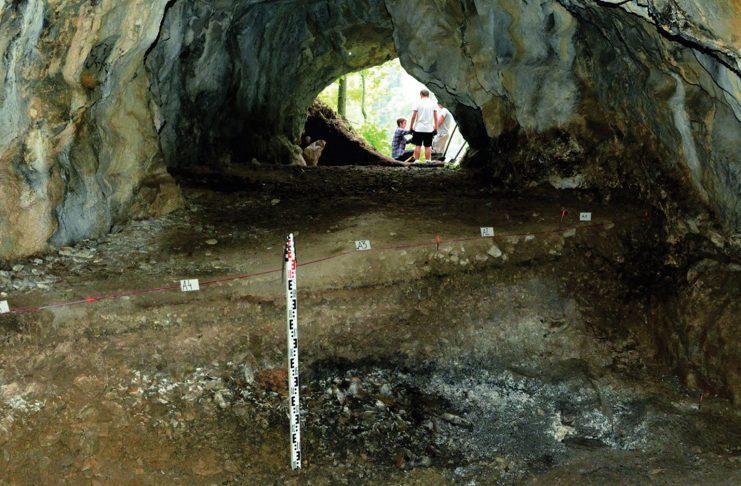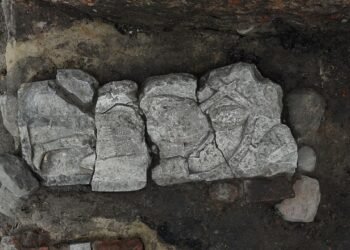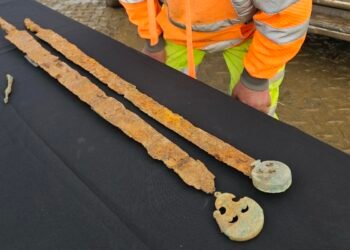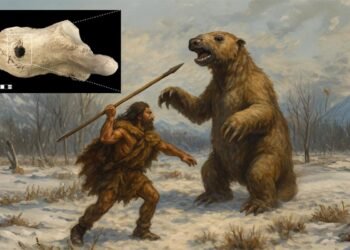A team of experts from the Institute of Archaeology at Jagiellonian University in Krakow, including archaeologists, palaeozoologists, geologists, sedimentologists, archaeobotanists, and palaeogeneticists, made an important find in Slovakia’s Belianske Tatras mountain range.
They uncovered evidence of ancient hunters in the huivá cave, such as numerous blades crafted from materials like radiolarite, flint, or limnosilicite, along with bone needles and the remains of different animals.
The team also made discoveries of faunal and archaeobotanical remains during their investigation. Among these remains were chamois (Rupicapra rupicapra), deer (Cervus elaphus), and wild horses (Equus ferus).
Analysis of over a dozen bones revealed signs of cut marks, cracking for extracting marrow and smoothing done with stone tools. Isotope analysis indicated that these traces were found within a Paleolithic settlement left behind by the Magdalenian people.

The Magdalenians, who lived in Europe around 23,000 to 14,000 years ago, during the final stages of the last Ice Age, derived their name from the renowned site called Abri de la Madeleine, a rock shelter located in southwestern France.
Professor Paweł Valde-Nowak from the Institute of Archaeology at Jagiellonian University in Krakow stated that the Magdalenian people were a group of specialized hunters, particularly skilled in hunting ibex, a species no longer present in the Tatras region today.
According to a previous statement, the researchers uncovered a variety of artifacts in the Tatra caves, including hundreds of thrown weapon blades, bone needles, a fragment of a stone lamp, and numerous animal bones.
It was noted that attempts to find evidence of prehistoric human presence in the Tatra caves had been made since the nineteenth century, but without success until now.
The Magura Cave in the Polish Tatras was one of the sites selected for exploration; however, excavations conducted before World War II did not yield the expected results.
In a previous discovery by the Slovak-Polish team, fragments of clay pots from the 15th and 16th centuries, as well as coins from World War II, were found in Huivá Cave, along with artifacts from the end of the Ice Age.
The recent study, published in the journal Antiquity, also indicates that the group specialized in hunting the alpine ibex (Capra ibex), a species of wild goat that inhabits rugged terrain near the snowline of mountains.
Until recently, there was scant evidence of prehistoric settlements in the alpine region of the Carpathian Mountains.
More information: Valde-Nowak, P., Baca, M., Cieśla, M., Kościuk-Załupka, J., Kraszewska, A., Lemanik, A., . . . Sojak, M. (2022). Hučivá Cave: A Magdalenian hunting camp in the Tatra Mountains. Antiquity, 96(388), 1008-1014. doi:10.15184/aqy.2022.60
























